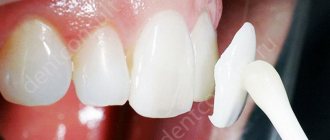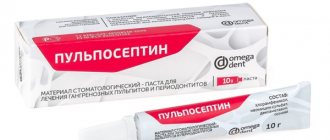In the article we will look at the instructions for use of Tsiprolet drops.
Are they ear or eye? Let's figure it out.
This is an antibiotic intended for local use and showing increased activity against many pathogenic microorganisms. "Tsiprolet" is prescribed to eliminate the inflammatory process in the eyes caused by harmful bacteria. The drug is low-toxic, which makes it possible to prescribe drops to children over the age of one year. This antibiotic is relatively safe and rarely causes adverse reactions, especially when applied topically. In general, the drug is intended for the eyes. But Tsiprolet drops are also used in the ears.
Properties
This substance has a pronounced antibacterial effect and affects many pathogenic microorganisms. The spectrum of action of ciprofloxacin is quite wide. The substance has no analogues in nature and is not an antibiotic in the full sense of the word, as it differs in chemical composition. The drug is prescribed for the treatment of infectious pathologies caused by infection with gram-negative or gram-positive bacteria.
The use of Tsiprolet drops is advisable in cases where pathogens of the pathological process demonstrate resistance to other antibacterial substances. When used topically, it is possible to prevent immunological adverse reactions to the drug.
The effectiveness of the drug is due to the inhibition of the synthesis of topoisomerase, a bacterial enzyme responsible for the production of DNA. As a result, the cell of the pathogenic microorganism ceases to function normally and dies.
The bactericidal effect of the drug is ensured both at the stage of active bacterial growth and at rest. Another important property of ciprofloxacin is that when used simultaneously with other antibiotics, bacteria do not have the opportunity to develop resistance to them. That is, “Tsiprolet” is especially effective in combination with other antibacterial agents, such as aminoglycosides, penicillins, cephalosporins and tetracyclines.
In what other cases is the use of Tsiprolet eye drops indicated?
pharmachologic effect
Is Tsiprolet an antibiotic or not? Yes, Tsiprolet is an antibiotic . The main component is ciprofloxacin. The active component is a fluoroquinolone derivative. The mechanism of action is aimed at suppressing DNA gyrase of the bacterial cell, which leads to disruption of DNA synthesis , slowing down the processes of growth and reproduction of microbes. As a result of pronounced morphological changes under the influence of the antibacterial agent Tsiprolet, the microbial cell dies. The bactericidal effect manifests itself during the period of division and dormancy of gram-negative microorganisms. In relation to gram-positive flora, the bactericidal effect is manifested only during division. The cells of the macroorganism do not contain DNA gyrase, which completely eliminates the toxic effect on the human body. The drug does not cause resistance to other antibacterial drugs. Tsiprolet is active against aerobic flora, enterobacteria, gram-negative flora, chlamydia, listeria, mycobacterium tuberculosis, yersinia, campylobacteria, protea, mycoplasma, etc. The drug does not have a bactericidal or bacteriostatic effect on Treponema pallidum (the causative agent of syphilis ).
Indications
The drug in the form of drops is prescribed for the treatment of infectious and inflammatory eye diseases, including:
- Conjunctivitis in acute and subacute forms.
- Blepharoconjunctivitis and blepharitis.
- Ulcerative lesion of the cornea of the eye of bacterial origin.
- Chronic dacryocystitis and meibomitis.
The list of indications for Tsiprolet eye drops is quite extensive.
In addition, the product is used as a preparatory step before surgical manipulations on the eye in order to prevent infectious complications. Drops are also prescribed after surgery. The drug is also included in complex therapy if complications arise after injury to the eye or a foreign body entering it.
We have reviewed the indications for Tsiprolet drops. Let's find out what contraindications they have.
Contraindications
Contraindications for using the drug are:
- Hypersensitivity to substances belonging to the group of fluoroquinolones.
- Individual intolerance to ciprofloxacin or other substances included in the drug.
- Gestation and breastfeeding period.
- The child is under one year old.
"Tsiprolet" is not prescribed against the background of keratitis of viral origin. The drug is used with caution in cases of cerebral atherosclerosis, as well as against the background of circulatory disorders.
Below are instructions for “Tsiprolet”. Ear drops are not used very often; we will describe them later.
Instructions and method of use
After administration of "Tsiprolet" into the eyes, the concentration of ciprofloxacin is 5 mg/ml of blood plasma. The level of active component content can be maintained in the required amount for up to 12 hours.
Ciprofloxacin is excreted primarily by the kidneys unchanged. The remaining substances are excreted in the intestines with feces. The active component is excreted in breast milk, which explains the ban on the use of the drug during lactation.
Eye drops are used exclusively topically by instillation into the conjunctival sac. If the infection is mild or moderate, instillation is carried out every four hours, 1-2 drops. If the pathological process is severe, 2 drops should be instilled into the eyes every hour. When the patient's condition improves, the dosage of the drug can be reduced.
If the cornea of the eye has been affected by a peptic ulcer of bacterial origin, the doctor prescribes instillation of the drug every 15 minutes for six hours, 1 drop. Further, the interval between instillations increases to half an hour. On the second day of treatment, the drug is instilled one drop every hour. From the third to the seventh day of treatment, Tsiprolet is instilled every four hours. If after one week a new epithelial layer has not been formed on the cornea of the eye, treatment can be prolonged in consultation with the doctor.
To prevent infectious complications after surgery, it is recommended to instill 1-2 drops into each eye before surgery and every five hours for the first day after.
Tsiprolet eye drops
INSTRUCTIONS for the use of the medicinal product for medical use
CIPROLET®
Registration number: P N 012765/01 Trade name of the drug: Ciprolet® International nonproprietary name of the drug: ciprofloxacin. Chemical name: 4-oxo-7-(piperazin-1-yl)-6-fluoro-1-cyclopropyl-1,4-dihydroquinoline-3-carboxylic acid hydrochloride monohydrate Dosage form: eye drops
Composition 1 ml of solution contains: Active ingredient: ciprofloxacin hydrochloride (equivalent to 3.0 mg of ciprofloxacin) - 3.49 mg/ml. Excipients: disodium edetate 0.50 mg, sodium chloride 9.00 mg, benzalkonium chloride 50% solution 0.0002 ml, hydrochloric acid 0.000034 mg, water for injection up to 1.0 ml.
Description Transparent, colorless or light yellow solution.
Pharmacotherapeutic group: antimicrobial agent, fluoroquinolone.
ATX code: S01AX13
Pharmacological action Pharmacodynamics A broad-spectrum antimicrobial agent, a fluoroquinolone derivative, suppresses bacterial DNA gyrase (topoisomerases II and IV, responsible for the process of supercoiling of chromosomal DNA around nuclear RNA, which is necessary for reading genetic information), disrupts DNA synthesis, growth and division of bacteria; causes pronounced morphological changes (including cell wall and membranes) and rapid death of the bacterial cell. It has a bactericidal effect on gram-negative organisms during the period of rest and division (since it affects not only DNA gyrase, but also causes lysis of the cell wall); it acts on gram-positive microorganisms only during the period of division. Low toxicity for the cells of the macroorganism is explained by the absence of DNA gyrase in them. While taking ciprofloxacin, there is no parallel development of resistance to other antibiotics that do not belong to the group of DNA gyrase inhibitors, which makes it highly effective against bacteria that are resistant, for example, to aminoglycosides, penicillins, cephalosporins, tetracyclines and many other antibiotics. Gram-negative aerobic bacteria are sensitive to ciprofloxacin: enterobacteria (Escherichiacoli, Salmonellaspp., Shigellaspp., Citrobacterspp., Klebsiellaspp., Enterobacterspp., Proteusmirabilis, Proteusvulgaris, Serratiamarcescens, Hafniaalvei, Edwardsiellatarda, Providencia spp., Morganellamorganii, Vibriospp. , Yersiniaspp.), others gram-negative bacteria (Haemophilus spp., Pseudomonasaeruginosa, Moraxellacatarrhalis, Aeromonasspp., Pasteurellamultocida, Plesiomonasshigelloides, Campylobacterjejuni, Neisseriaspp.), some intracellular pathogens - Legionellapneumophila, Brucellaspp., Chlamydiatrachomatis, Listeria monocytogenes, Mycobacterium tuberculosis, My cobacteriumkansasii, Corynebacteriumdiphtheriae; gram-positive aerobic bacteria: Staphylococcus spp. (Staphylococcus aureus, Staphylococcus haemolyticus, Staphylococcus hominis, Staphylococcus saprophyticus), Streptococcus spp. (Streptococcus pyogenes, Streptococcus agalactiae). Most staphylococci resistant to methicillin are also resistant to ciprofloxacin. The sensitivity of Streptococcus pneumoniae, Enterococcus faecalis, Mycobacterium avium (located intracellularly) is moderate (high concentrations are required to suppress them). The following are resistant to the drug: Bacteroides fragilis, Pseudomonas cepacia, Pseudomonas maltophilia, Ureaplasma urealyticum, Clostridium difficile, Nocardia asteroides. Not effective against Treponema pallidum. Resistance develops extremely slowly, since, on the one hand, after the action of ciprofloxacin there are practically no persistent microorganisms left, and on the other hand, bacterial cells do not have enzymes that inactivate it.
Pharmacokinetics The maximum concentration of the drug (Cmax) in plasma when using eye drops is less than 5 ng/ml. The average concentration is below 2.5 ng/ml. After instillation, systemic absorption of the drug is possible. The drug is excreted through the kidneys mainly unchanged (50%) in the form of metabolites (up to 10%), about 15% is excreted through the intestines, and in nursing mothers it passes into breast milk.
Indications for use Local treatment of various infectious diseases of the eye and its appendages caused by bacteria sensitive to the drug: acute and subacute conjunctivitis, blepharoconjunctivitis, blepharitis, bacterial corneal ulcers, bacterial keratitis and keratoconjunctivitis, chronic dacryocystitis and meibomitis. Preoperative prophylaxis in ophthalmic surgery. Treatment of postoperative infectious complications. Treatment and prevention of infectious complications of the eyes after injuries or foreign bodies.
Contraindications: Hypersensitivity to ciprofloxacin and other quinolone drugs, viral keratitis, pregnancy, lactation (breastfeeding), children (up to 1 year).
with caution in patients with cerebral atherosclerosis, cerebrovascular accident, and convulsive syndrome.
Method of administration and dosage Locally. For mild and moderately severe infections, instill 1-2 drops into the conjunctival sac of the affected eye every 4 hours, for severe infections - 2 drops every hour. After the condition improves, the dose and frequency of instillations are reduced. For bacterial corneal ulcers: 1 drop every 15 minutes for 6 hours, then 1 drop every 30 minutes during waking hours; on day 2 – 1 drop every hour during waking hours; from days 3 to 14 – 1 drop every 4 hours during waking hours. If after 14 days of therapy epithelialization has not occurred, treatment can be continued.
Side effects Allergic reactions, itching, burning, mild soreness and hyperemia of the conjunctiva, nausea, rarely - swelling of the eyelids, photophobia, lacrimation, sensation of a foreign body in the eyes, unpleasant taste in the mouth immediately after instillation, decreased visual acuity, the appearance of a white crystalline precipitate in patients with corneal ulcer, keratitis, keratopathy, corneal infiltration, development of superinfection.
Overdose There are no data on overdose of the drug when applied topically. If the drug is accidentally taken orally, there are no specific symptoms. Nausea, vomiting, diarrhea, headache, fainting, and anxiety may occur. Treatment: standard emergency measures, adequate fluid intake, acidification of urine to prevent crystalluria.
Interaction When combined with other antimicrobial drugs (beta-lactam antibiotics, aminoglycosides, clindamycin, metronidazole), synergism is usually observed; can be successfully used in combination with azlocillin and ceftazidime for infections caused by Pseudomonas spp.; with mezlocillin, azlocillin and other beta-lactam antibiotics - for streptococcal infections; with isoxazolepenicillins and vancomycin - for staphylococcal infections; with metronidazole and clindamycin - for anaerobic infections. Ciprofloxacin solution is pharmaceutically incompatible with drugs with a pH value of 3-4 that are physically or chemically unstable.
Special instructions Eye drops can only be used topically; the drug cannot be administered subconjunctivally or into the anterior chamber of the eye. When using Tsiprolet® eye drops and other ophthalmic solutions, the interval between their administrations should be at least 5 minutes. During treatment with the drug, wearing contact lenses is not recommended. Patients who temporarily lose clarity of vision after application are not recommended to drive a car or work with complex machinery, or any complex equipment that requires clarity of vision, immediately after instillation of the drug.
Release form: Eye drops 3 mg/ml. 5 ml of the drug in a plastic dropper bottle with a screw cap. 1 bottle is placed in a cardboard box along with instructions for use.
Storage conditions List B. In a dry place, protected from light, at a temperature not exceeding 25°C. Do not freeze. Keep out of the reach of children!
Shelf life 2 years. Use the drug within 1 month after opening the bottle. Do not use after the expiration date stated on the packaging.
Conditions for dispensing from pharmacies By prescription.
Manufacturer Dr. Reddy's Laboratories Ltd. Hyderabad, Andhra Pradesh, India.
Manufacturing Location Plot No.2, Sudarshanpur Industrial Estate, Bais Godam, Jaipur 302006, SP-918, Phase III, Industrial Estate, Bhiwadi District, Alwar, India.
Address for sending claims: Representative office 115035, Moscow, Ovchinnikovskaya embankment, 20, building 1 tel., 783-29-01; Fax
Use for otitis media
What else does the Tsiprolet instruction tell us?
Ear drops are widely used in the practice of otolaryngologists for the treatment of otitis media. As a rule, they are prescribed if other antibacterial substances are ineffective. The solution for instillation is sterile, which allows it to be instilled into the ears as prescribed by a doctor. Tsiprolet ear drops are prescribed for the treatment of otitis media of the middle ear and external type, as well as complications of an inflammatory and infectious nature during the recovery period after surgery.
When prescribing a drug for the treatment of otitis, you should take into account the fact that Tsiprolet ear drops have certain contraindications. The dosage is determined by the doctor depending on the form and course of the pathological process. The duration of use is also prescribed by a specialist.
For mild otitis, 1-2 Tsiprolet ear drops are instilled into the affected ear, and the procedure is repeated every four hours. In the case of an acute course, the interval between instillation should be one hour until positive dynamics and improvement in the patient’s condition occur. Next, the treatment is adjusted. The duration of therapy is 7-10 days, but in exceptional cases the specialist may decide to prolong treatment up to one month.
In childhood, the dosage and frequency of use of Tsiprolet ear drops is also determined by the doctor depending on the nature and form of the pathological process. It is not recommended to complete treatment on your own, as this may affect the child’s immune system. The course must be completed in full, strictly as prescribed by the doctor.
Reviews about Tsiprolet
Reviews of Tsiprolet tablets
In general, the drug, of course, helps, since it is an antibiotic. However, it is worth remembering that it is for this reason that it should be taken only in extreme cases, so as not to harm health, especially in doses exceeding 500 mg. In particular, the annotation says that you should not take Tsiprolet before reaching adulthood, as this can negatively affect the skeleton. There are also reviews on the Internet about the side effects of this drug, such as weakness, dizziness, and difficulty breathing.
The drug is successfully taken for cystitis, but it is not recommended to stay in the sun for a long time while taking this antibiotic.
Reviews of Tsiprolet eye drops
Effective for conjunctivitis, blepharitis, stye. The drops are inexpensive.











